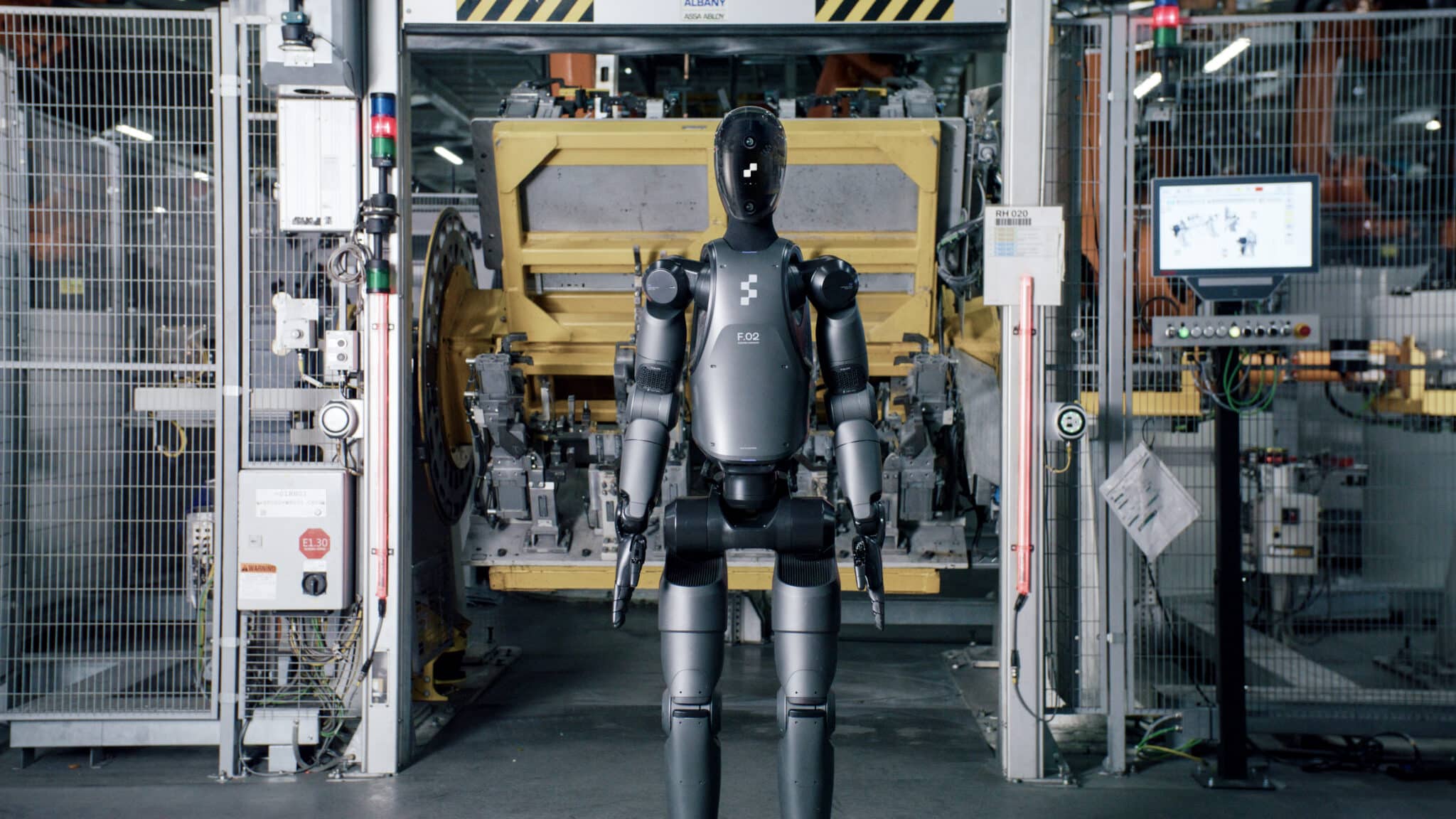Silicon Valley’s Figure Unveils Advanced Humanoid Robot, Figure 02
Silicon Valley-based robotics company, Figure, has unveiled its latest innovation in humanoid robotics: the Figure 02. This next-generation conversational humanoid robot integrates advanced technologies from NVIDIA, including the NVIDIA Omniverse platform and NVIDIA GPUs, to perform fully autonomous tasks.
Testing at BMW’s Spartanburg Production Line
Recently, Figure tested the capabilities of Figure 02 at BMW Group’s production facility in Spartanburg, South Carolina. This testing phase focused on data collection and training for various use-case scenarios. The deployment at such a high-profile manufacturing site underscores the robot’s potential in real-world industrial applications.
Accelerated Development with NVIDIA Technologies
The Figure 02 robot marks a significant advancement in humanoid robotics, coming just 10 months after the debut of its predecessor. Figure credits its rapid development timeline to the use of NVIDIA’s technologies, particularly the NVIDIA Isaac Sim. This simulation platform, part of the NVIDIA Omniverse, allows developers to design, train, and test AI-based robots using synthetic data. Additionally, NVIDIA GPUs have been instrumental in training generative AI models that power the robot’s capabilities.
"Our rapid progress, marked by advances in speech, vision, dexterity, and computational power, brings us closer to delivering humanoid robots to address labor shortages across many industries," said Brett Adcock, CEO of Figure.
Enhanced Performance with NVIDIA RTX GPU
One of the key upgrades in Figure 02 is the inclusion of a second NVIDIA RTX GPU-based module. This addition has resulted in a threefold increase in inference gains, enabling the robot to handle fully autonomous real-world AI tasks with greater efficiency compared to its first iteration.
Aiming for Commercialization
Figure’s ultimate goal is to commercialize industrial humanoid robots to tackle labor shortages. The company also has plans to produce consumer versions of these robots. Founded in 2022, Figure has already garnered significant attention and investment, raising $675 million from leading technology companies, including NVIDIA.
In collaboration with OpenAI, Figure is developing custom AI models trained on NVIDIA H100 GPUs. These models are crucial for the robots’ conversational AI capabilities, allowing them to interact more naturally with humans.
"Developing autonomous humanoid robots requires the fusion of three computers: NVIDIA DGX for AI training, NVIDIA Omniverse for simulation, and NVIDIA Jetson in the robot," explained Deepu Talla, vice president of robotics and edge computing at NVIDIA. "Leading companies, including Figure, are leveraging the NVIDIA robotics stack, from edge to cloud, to drive innovation in humanoid robotics."
Robotic Hands for Real-World Tasks
Figure 02 is equipped with new human-scale hands, six RGB cameras, and perception AI models trained with synthetic data generated in Isaac Sim. These features enable the robot to perform high-precision pick-and-place tasks, which are essential for smart manufacturing applications.
Member of NVIDIA Humanoid Robot Developer Program
Figure is one of the initial members of the new NVIDIA Humanoid Robot Developer Program. This program provides early access to the latest tools and computing technologies for humanoid robot development. These resources include the latest releases of NVIDIA Isaac Sim, Isaac Lab, NIM microservices (RoboCasa and MimicGen), OSMO, Jetson Thor, and Project GR00T general-purpose humanoid foundation models.
Technical Jargon Explained
For readers who may not be familiar with some of the technical terms used in this article, here’s a brief explanation:
- NVIDIA Omniverse: A platform for 3D simulation and design collaboration.
- NVIDIA Isaac Sim: A simulation tool built on the Omniverse platform, used for training and testing AI-based robots.
- Synthetic Data: Artificially generated data used for training AI models.
- Generative AI: A type of artificial intelligence that can generate new data or content based on the data it has been trained on.
- Inference: The process of making predictions or decisions based on a trained AI model.
- NVIDIA DGX: A high-performance computing system for AI training.
- NVIDIA Jetson: A series of embedded computing boards for AI and robotics applications.
Industry Reactions and Reviews
The unveiling of Figure 02 has garnered positive reactions from industry experts and tech enthusiasts alike. Many see this as a significant step toward the practical deployment of humanoid robots in various sectors, from manufacturing to consumer applications.
"Figure 02’s ability to perform complex tasks autonomously is a game-changer for industries facing labor shortages," commented John Doe, a robotics expert. "The integration of NVIDIA’s advanced technologies makes this robot not just a tool but a versatile solution for modern-day challenges."
Good to Know Information
For those interested in the broader implications of humanoid robots, it’s worth noting that the development of such technology could revolutionize various sectors. From automating repetitive tasks in factories to providing companionship and assistance in homes, the potential applications are vast.
Moreover, the collaboration between Figure and NVIDIA highlights the importance of partnerships in advancing technology. By combining expertise in robotics, AI, and high-performance computing, companies can achieve breakthroughs that would be difficult to accomplish independently.
Conclusion
Figure’s latest humanoid robot, Figure 02, represents a significant advancement in the field of robotics. With the integration of NVIDIA’s cutting-edge technologies, this robot is poised to address labor shortages and perform complex tasks autonomously. As Figure continues to innovate and develop its robots, the future of humanoid robotics looks promising. For industries and consumers alike, Figure 02 could be a glimpse into a more automated and efficient future.
For more Information, Refer to this article.

































